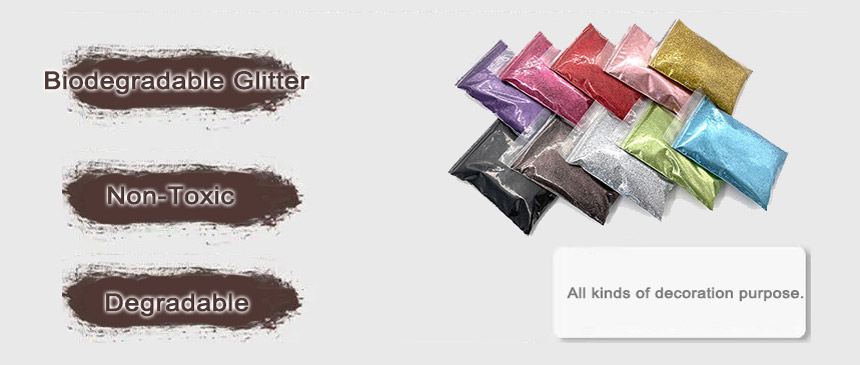The Future of Sparkle: Why PLA Glitter is the Sustainable Choice
17 Aug 2023
In today's green-conscious era, the choice between biodegradable glitter and its regular plastic counterpart can be quite the conundrum. After all, glitter is glitter, and its sole purpose in existence is to make everything shiny and beautiful, right?
The Glittery Problem with Traditional Sparkle
Glitter is everywhere - from our clothes, art pieces, cosmetics, toys, to greeting cards and wrapping papers. It's the universal symbol of celebration and radiance. Yet, this ubiquitous sparkle is often made from microplastics like PET, PVC, and PE. As awareness grows, we're coming to grips with the environmental toll of these tiny, shimmering particles. Traditionally crafted from metalized plastic films, these microplastics can easily infiltrate our ecosystems, whether they're rinsed off our skin or shed from a festive card.
These minuscule invaders, being plastic, don't just vanish. They linger for years, polluting our land and waters, and often end up in the bellies of terrestrial and marine creatures. The result? A potential ecological disaster, with glitter sometimes playing a lethal role.
The Rise of Biodegradable Glitter
Enter the era of eco-friendly glitter. Now, you can keep the sparkle alive without compromising Mother Earth's well-being. Biodegradable glitter, in essence, shuns plastic. Instead, it champions natural and plant-derived materials. These materials, under specific conditions, can break down, especially in industrial composting environments.
To make informed green choices, it's essential to understand the materials replacing traditional ones:
1. Cellophane-based Glitter: Born from cellulose-based bioplastic in the 1930s, cellophane might sound eco-friendly. However, its chemical makeup doesn't favor natural biodegradation. Despite its long-standing presence, no brand has achieved a biodegradable certification for it.
2. Compostable Glitter: The term can be a tad deceptive. While recyclable, this glitter type requires specific conditions to decompose, including the right temperature, pressure, and bacterial presence.
3. Modified Regenerated Cellulose: This is another cellulose variant, often used in "green" glitter. Derived from natural sources like eucalyptus, it does biodegrade. But, it's often coated with aluminum and a hint of plastic for that extra sheen.
4. Regenerated Eucalyptus Cellulose: This glitter, touted to degrade under natural conditions, is still in its infancy. Its production costs are also on the higher side.
5. PLA Biodegradable Glitter: PLA, is also called Poly lactic acid. It's derived from renewable sources like corn starch and sugar cane. PLA glitter is often hailed as the eco-friendlier glitter. However, for effective composting, it demands an industrial setup.
 Currently, PLA stands tall as a top recommendation for biodegradable glitter. While it does require specific conditions for decomposition and might not degrade naturally, its cost-effectiveness and adherence to many countries' degradability standards make it a favorite among manufacturers.
However, it's pivotal to remember that while PLA glitter shines with benefits, it's not without flaws. If it lands in an unsuitable environment, it can linger as long as its traditional counterparts. Yet, when weighing its environmental footprint, especially concerning resource consumption and biodegradability, PLA glitter often outshines its plastic rivals.
Currently, PLA stands tall as a top recommendation for biodegradable glitter. While it does require specific conditions for decomposition and might not degrade naturally, its cost-effectiveness and adherence to many countries' degradability standards make it a favorite among manufacturers.
However, it's pivotal to remember that while PLA glitter shines with benefits, it's not without flaws. If it lands in an unsuitable environment, it can linger as long as its traditional counterparts. Yet, when weighing its environmental footprint, especially concerning resource consumption and biodegradability, PLA glitter often outshines its plastic rivals.
